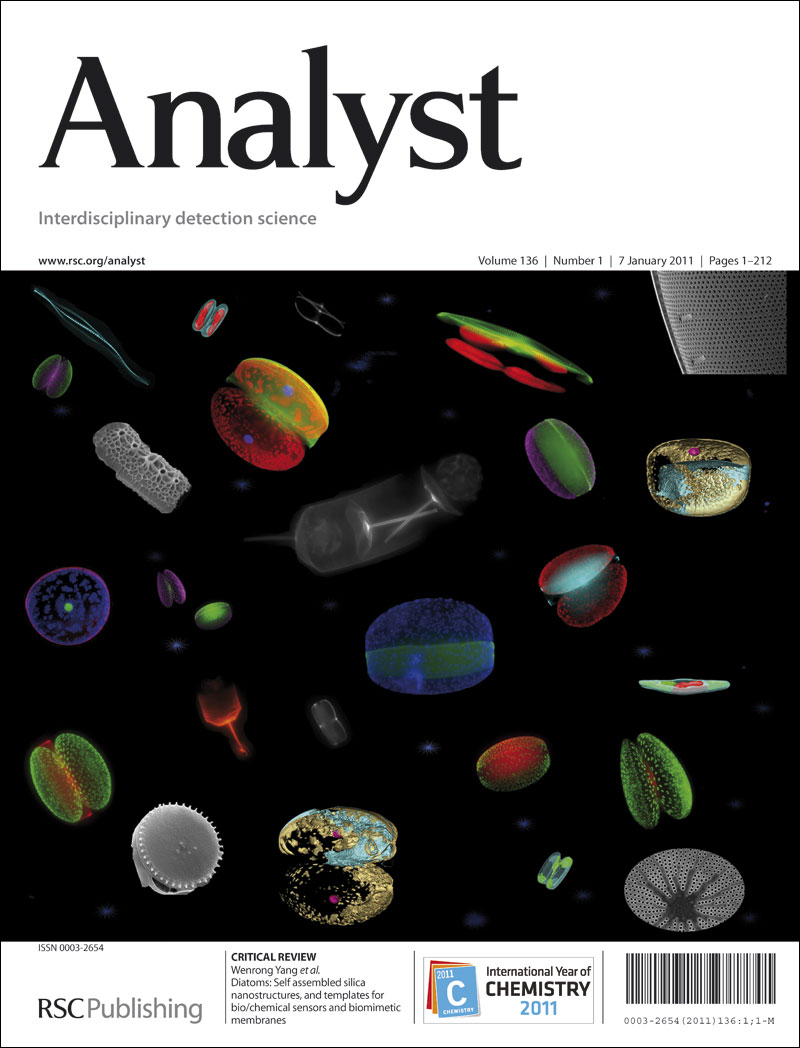Hybrid NGO-PSO optimized random forest combined with multi-energy LIBS for enhanced accurate classification of tea.
IF 3.3
3区 化学
Q2 CHEMISTRY, ANALYTICAL
引用次数: 0
Abstract
Accurately measuring and analyzing the chemical composition and spectral characteristics of tea is of great significance for improving the sorting accuracy and preventing tea adulteration and variety misjudgment. We propose a tea identification and classification system that combines multiple settings of laser-induced breakdown spectroscopy (LIBS) and a Random Forest model that combines the Northern Eagle and Particle Swarm Optimization algorithm (NGO-PSO-RF), which provides a new idea for efficient and accurate classification and recognition of tea. The experiment increased the spectral difference between similar samples by measuring the spectral data of eight tea samples at three different energies. Principal Component Analysis (PCA) was performed on the spectral data at each energy, and the first three principal components were extracted to construct the fusion feature set. PCA dimension reduction was used again to obtain the core feature vector. The original complex multi-energy spectral data were simplified by performing two analyses. Finally, the fusion spectral data were analyzed using the NGO-PSO-RF model, and the classification accuracy of the test set was 99.22%, which was 3.13 percentage points higher than the average classification accuracy (96.09%) at a single energy, and the core indicators, such as the recall rate (+3.11%) and F1 value (+3.19%), were synchronously optimized. In addition, compared with LSTM, SVM, RF and PSO-RF, the classification accuracy of the NGO-PSO-RF model improved by 6.77%, 5.47%, 5.34% and 3.52% respectively. This method provides an innovative and efficient method with high universality and robustness for material classification and provides important technical support and reliable detection prospects for food production safety and chemical analysis.混合NGO-PSO优化的随机森林结合多能LIBS提高茶叶的准确分类。
准确测定和分析茶叶的化学成分和光谱特征,对于提高茶叶分选精度,防止茶叶掺假和品种误判具有重要意义。本文提出了一种结合多种激光诱导击穿光谱(LIBS)设置和结合北方鹰和粒子群优化算法(NGO-PSO-RF)的随机森林模型的茶叶识别分类系统,为茶叶高效、准确的分类识别提供了新的思路。本实验通过测量8个茶叶样品在3种不同能量下的光谱数据,增加了相似样品之间的光谱差异。对每个能量的光谱数据进行主成分分析(PCA),提取前三个主成分构建融合特征集。再次采用主成分分析法降维得到核心特征向量。通过两次分析,简化了原始复杂的多能谱数据。最后,利用NGO-PSO-RF模型对融合光谱数据进行分析,测试集的分类准确率为99.22%,比单能量下的平均分类准确率(96.09%)提高了3.13个百分点,并对召回率(+3.11%)和F1值(+3.19%)等核心指标进行了同步优化。此外,与LSTM、SVM、RF和PSO-RF相比,NGO-PSO-RF模型的分类准确率分别提高了6.77%、5.47%、5.34%和3.52%。该方法为材料分类提供了一种具有高度通用性和鲁棒性的创新高效方法,为食品生产安全和化学分析提供了重要的技术支持和可靠的检测前景。
本文章由计算机程序翻译,如有差异,请以英文原文为准。
求助全文
约1分钟内获得全文
求助全文
来源期刊

Analyst
化学-分析化学
CiteScore
7.80
自引率
4.80%
发文量
636
审稿时长
1.9 months
期刊介绍:
"Analyst" journal is the home of premier fundamental discoveries, inventions and applications in the analytical and bioanalytical sciences.
 求助内容:
求助内容: 应助结果提醒方式:
应助结果提醒方式:


